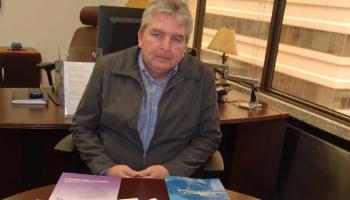Image Caption
By Shari Narine
Windspeaker Contributor
EDMONTON
As the ministerial panel on child intervention moves on to its next round of deliberations, Child and Youth Advocate Del Graff is hopeful focusing on the death review process will have opened eyes.
“I think the fact they started there helped them to understand some of the complexities, and as they go on to the second phase, those complexities are just going to grow,” said Graff.
Those complexities centre around the need to address child intervention services in a holistic manner, and not on an incident-by-incident piecemeal fashion.
“There are no simple answers. If there were, these issues would have been dealt with a long time ago,” said Graff.
And the complexity of the issues surrounding Indigenous children and families in the child intervention system can only be understood by involving those who have experienced that system, Graff believes, especially considering the make-up of the panel.
Graff says the panel was one opportunity for a “full and equal partnership between governments and Aboriginal communities…,” a recommendation that came from the Youth Advocate’s 2016 special report, Voices for Change. The report examined the over-representation of Indigenous children in government care.
But Child Welfare Minister Danielle Larivee appointed no Indigenous people to the 13-member all-party panel. The only person with Indigenous ancestry is Patti Laboucane-Benson, with Native Counselling Services of Alberta, who is one of three experts to the panel.
“So where I have some optimism is that if they recognize, for example, they need to hear from young people with lived experience…. I think it’s the same with Indigenous participation. They have to find a way to make it so that these people’s voices are heard. And they listen and they make the shifts that make sense given what they’ve heard. It can’t just be a political process and I’m really quite concerned about that,” said Graff.
The panel met with a number of Indigenous representatives and groups in its first round of hearings, as well as Graff.
In this next round, Graff wants the panel to listen to the Youth Advocate’s youth advisory panel.
“(If) they hear from those young people, they’ll hear something different than anybody else. The change they need to make to the child welfare system has to be informed by what those young people have to say,” he said.
After two-and-a-half months of sittings, in April the panel agreed to draft recommendations that included increased authority for Child and Youth Advocate office, greater accountability for preventable deaths, timely completion of reviews, better supports for families, greater cultural sensitivity, and improved information sharing.
While no details have accompanied the recommendations, Graff points out that the concepts of those recommendations are not new—whether they were voiced through his office or any of the multiple previous special reports tabled.
“We also are at that in-between place where the panel is making these recommendations, but then those recommendations have to translate into some sort of legislation that provides specific guidance,” he said.
What will drive this legislation, says Graff, comes down to the single question he and his team heard most often when interviewing people for the Voices for Change report: “Will it make a difference” what the Indigenous community has to say?

